I am sorry
Please forgive me
Thank you
I love you
The following video is something I would like to share with you today, especially with Americans who believe their government and corporate media, on the 10th anniversary of 911. Because I have so many dear friends in the USA:
You can see some of the people who are trying to reveal the truth. In fact, some of them have risked their lives to expose the discrepancies in the official story. They need more of our attention:
http://torontohearings.org/author/torontohearings/
Here is USTREAM:
http://www.ustream.tv/channel/thetorontohearings
I would like to tell you that something similar is happening in Japan.
Right now, the facts about Fukushima nuclear power plants' disaster are being hidden from the public so that the government and companies can reduce the amount of money they need to pay out to compensate the victims. They knew that the meltdown occurred right after the 311 earthquake, but they hid it from from us and the world for two months. During those two months the Japanese people in and around Fukushima (in my case I lived 150 miles from it) were exposed to excess radiation. Our government and TEPCO continue to try to make the effect of the damage look smaller and more trivial than what actually is. Our media is the same as in the rest of the world. The truth is distorted to the advantage of the government and corporations.
Today the International Conference on Radiation and Health Risk in Fukushima is being held. Many citizens and citizens groups are challenging the reliability of the conference as they believe it is actually a propaganda event that is being used to support nuclear industry and medical establishment who underestimate the risk of low level radiation, especially internal exposure.
Please read the citizen's point of view here.
May Love, Life and Truth thrive!
----
Open Letter of Inquiry to the Organizing Committee for the International Expert Symposium in Fukushima — Radiation and Health Risks
September 10, 2011
Concerning the International Expert Symposium that the Organizing Committee is planning at Fukushima Medical University on September 11 and 12, we have several questions and concerns. Some of them arise from the explanation repeatedly given to the residents of Fukushima Prefecture since the mid-March that exposure to ionizing radiation up to 100 mSv per year represents no harm to the health. The others are related to the evaluation of the Health Examination for Citizens in Fukushima Prefecture, which is to be the main theme of the planned International Expert Symposium.
We consider that the mission of the experts in radiological protection consists in preventing health hazard by minimizing exposure to radiation. However, the document, “An Initiative for the Health Examination for Citizens in Fukushima Prefecture,” says that the purposes of the Examination are “to remove fears among residents of Fukushima Prefecture raised in the wake of the nuclear plant accidents and to secure safety and relief through long-term health management of the residents.” For us, citizens of Fukushima, “safety and relief” can only be achieved when these radioprotection experts fulfil their responsibilities. On the contrary, however, these experts have done nothing but repeat the argument that exposure to radiation up to 100 mSv per year represents no harm to the health.
Also when we find a passage in the briefing document on the said Health Examination that says, “The impact on public health of the accidents at the Fukushima Daiichi Nuclear Power Plant can be assumed to be very minor,” we cannot but have an impression that the Examination is conducted under a presumed conclusion, refusing any on-going discussions with specialists with different views. We can only interpret such a scheme as an attempt to evade their own responsibilities. Distrust and discontent are rising among residents of the prefecture and the Japanese public at large. Exposure to radiation is continuing in diverse forms at various locations. Much of the responsibilities for this situation should be assumed by the Japanese experts who are the members of the Committee as well as by the selected foreign participants of the Symposium. It is very unlikely that any views helpful in changing the current situation and promoting proper radioprotection can be obtained from experts from overseas who are designated by the very parties responsible for the current situation. Given such development, we cannot help but concluding that what you are delivering is a make-believe external evaluation, which would only aggravate doubts and fears among residents.
For the reasons given above, we consider that the planned International Expert Symposium is inadequate to scientifically examine the impact on public health of radiation exposure resulted from the disaster at the Fukushima Daiichi Nuclear Power Plant, or to correctly evaluate the health risks involved and protect the public from radiation exposure.
We hereby convey our view, followed by our inquiry below concerning the Symposium organized by the Committee. Your sincere response to our inquiry will be much appreciated. Please note that this Letter of Inquiry will not only be delivered to the Committee but also be open to the public.
Question #1
Among the participants of the Symposium, there are no researchers reporting that the impact of low-dose exposure on health is greater than the assessment by the International Commission on Radiological Protection. If the International Expert Symposium is committed to studies on the impact of radiation exposure on health, it is essential to raise discussions among experts and researchers with different views. For what reasons are such researchers excluded from the Symposium?
Question #2
Fukushima Medical University Vice President Shunichi YAMASHITA, one of the Committee members, has been giving explanation to Fukushima residents that it is safe to be exposed to radiation up to 100 mSv per year. On the other hand, the Food Safety Commission, Cabinet Office, gives quite a different view that adverse impact is observed when one is exposed to a total dose of 100 mSv over a lifetime. What is your opinion on the huge gap between these two observations?
Question #3
Concerning the number of persons that died of cancer caused under the impact of radiation due to the Chernobyl disaster and the number of cancer patients, there is a significant discrepancy between the IAEA/WHO report (4,000 cancer deaths estimated by the Chernobyl Forum in 2005) and Annals of the New York Academy of Sciences, “Chernobyl: Consequences of the Catastrophe for People and the Environment,” (published in 2009; a total of one million deaths caused by various cancerous and non-cancerous diseases, stillbirths, etc.) or many other reports from ECRR, German Radiological Protection Association, etc. How will you explain the gap? We would like to have the view of the Committee good enough to be accepted by residents with fears.
Question #4
There is a passage, “The only illness pinned down related to the accident at the Chernobyl Nuclear Power Plant is thyroid cancer among children caused by internal exposure to radioactive iodine. No increases of other illnesses have been recognized” (“Purpose and Outline” in the Health Examination document). Are you planning examination of massive studies and reports (e.g., Annals of the New York Academy of Sciences, “Chernobyl: Consequences of the Catastrophe for People and the Environment” and German Affiliate of International Physicians for the Prevention of Nuclear War, Health Effects of Chernobyl, 2010) indicating observations different from the view above? If not, please explain the reasons.
Question #5
Despite the fact that experts and researchers have different opinions, they are not having any debate on the differences. This will lead to increasing concerns among local residents, which is against the purposes of the Symposium. What are the purposes and intent of the Organizing Committee? What are the reasons behind them?
Question #6
In the August 16 press conference, the Organizing Committee announced that you would compile suggestions for removing concerns over radiation among Fukushima residents in general and mothers with children in particular. You say you will make suggestions for eliminating concerns. Why won’t you make suggestions for radiological protection, instead?
Question #7
While being aimed at eliminating concerns among the public, why is the Symposium being held by excluding citizens in general, not allowing their voices to reach?
Sincerely,
Organizations and Researchers submitting this Letter of Inquiry
(in random order)
市民放射能測定所 Citizens' Radioactivity Measuring Station 47 プロジェクト Project47
低線量被ばくから子どもの未来を守るプロジェクトProject to protect the future of children from low dose exposure
高木学校 Takagi school
NPO 法人セイピースプロジェクト Say Peace Project
市民科学研究室・低線量被曝研究会 Exposure to Low-Dose Radiation Research Group, Citizen Science Initiative Japan
ドイツ放射線防護協会 German Society for Radiation Protection
たんぽぽ舎 no nukes plaza tanpoposya
未来の福島こども基金 Fukushima Children's Fund
and many others...

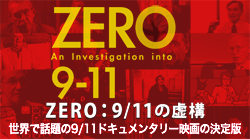

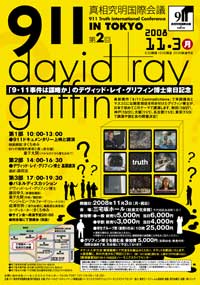

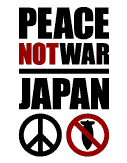



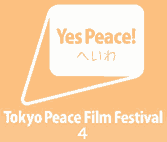



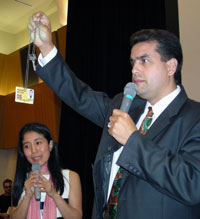
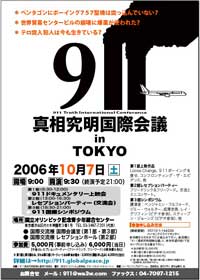




No comments:
Post a Comment